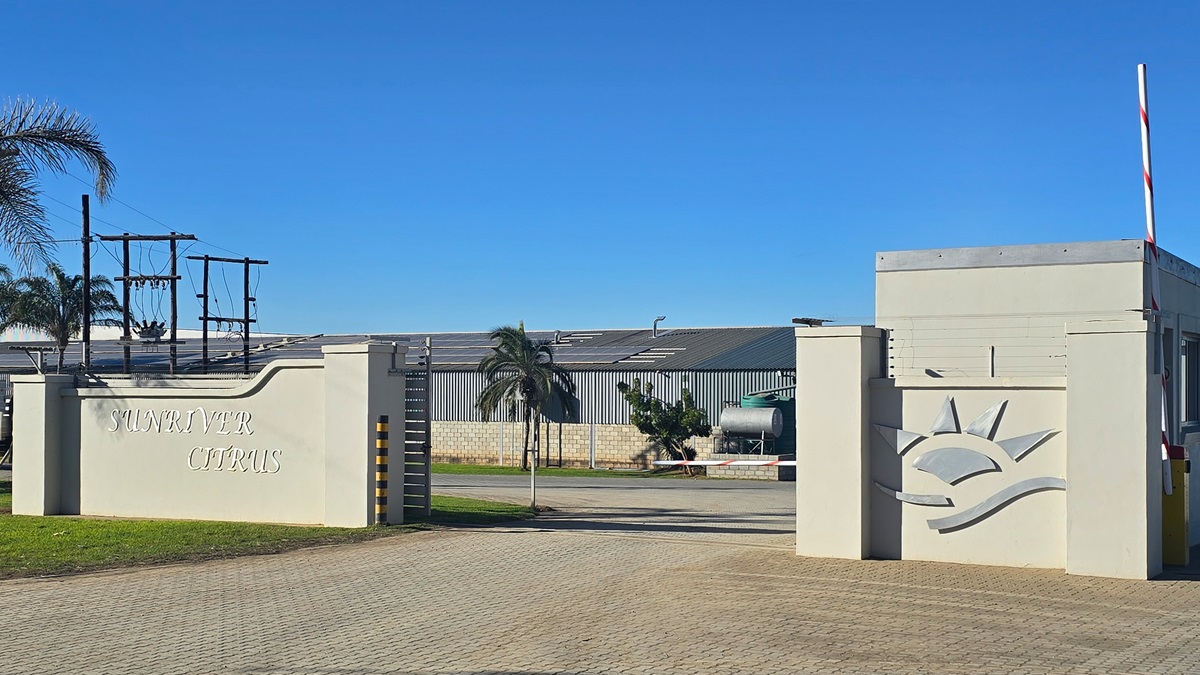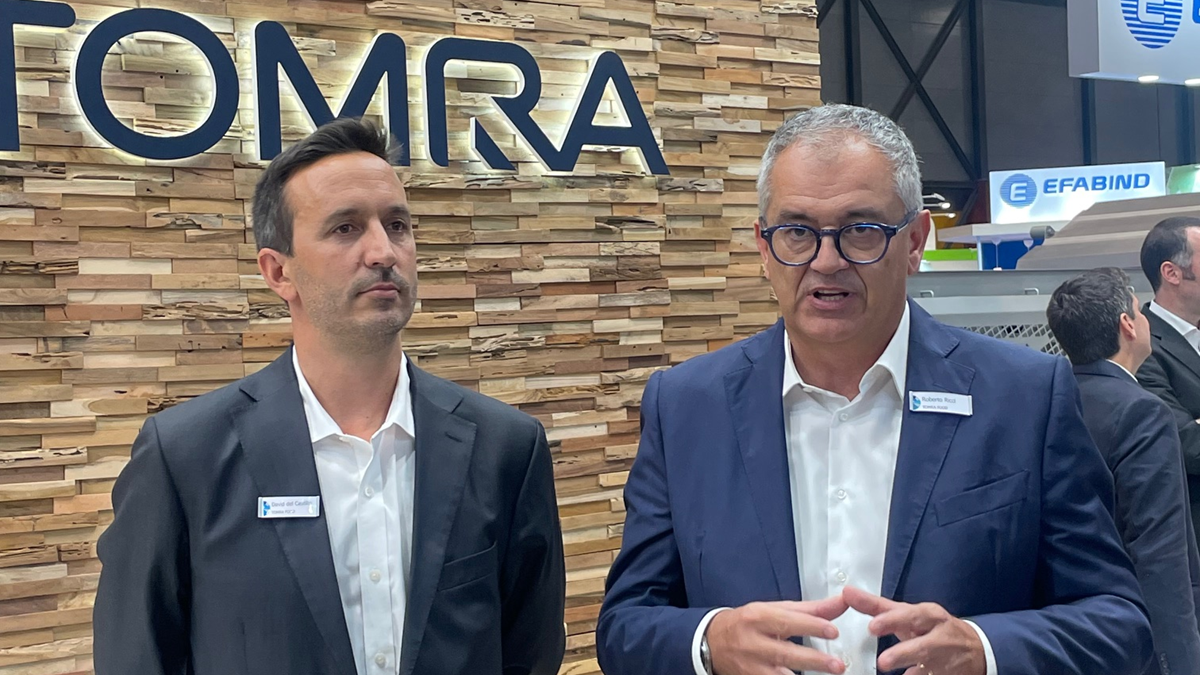Conditioning , Processing
Breakthrough for nut processing and sorting
TOMRA's new generation of free-fall nut sorting solutions combines the efficiency of laser foreign material detection with the camera for sorting product discolourations and shapes. Developed in-house, the unique BSI (Biometric Signature Identification) technology works by detecting the biometric characteristics of objects. Combined with TOMRA's patented Fluo? technology, the Nimbus detects even the faintest shades of chlorophyll to create a better contrast between good and defective products. Other technologies available include SWIR, which creates contrast between water-based products and other materials; the Advanced Foreign Material Detector?; and Detox?, for detecting aflatoxins. Alejandro Palacios, Sales Director for Spain and Portugal at TOMRA Food, answers some questions about TOMRA's new launches.
02 November, 2021
TOMRA's new generation of free-fall nut sorting solutions combines the efficiency of laser foreign material detection with the camera for sorting product discolourations and shapes. Developed in-house, the unique BSI (Biometric Signature Identification) technology works by detecting the biometric characteristics of objects. Combined with TOMRA's patented Fluo technology, the Nimbus detects even the faintest shades of chlorophyll to create a better contrast between good and defective products. Other technologies available include SWIR, which creates contrast between water-based products and other materials; the Advanced Foreign Material Detector; and Detox, for detecting aflatoxins. Alejandro Palacios, Sales Director for Spain and Portugal at TOMRA Food, answers some questions about TOMRA's new launches. What are the main applications of the TOMRA 5A and are there any modifications to be made to the machine depending on the product?At this fair, we are launching 3 different machines: the TOMRA 5A, which is our machine for whole products; the TOMRA 5B for fresh but chopped products and then, the novelty, which is the Nimbus BSI with a new application for frozen vegetables. Regarding the TOMRA 5A, it is a very versatile machine, it can do many things as long as the product is large. For example, we are talking about potatoes, peppers, beetroots... Anything that has a large size, because of the way it works, can be used. For this reason, it is ideal for multi-product customers, i.e. those who need to process different types of vegetables in the same company, such as a purée company, for example. With the same machine, by simply changing the programme, the machine can process different foodstuffs. What kind of foreign material is it able to detect and what is the minimum detection size?There are two types of defects in the whole product machines: defects inherent to the product, for example, potatoes that are rotten and black or that have green surface stains; and then there are all the foreign bodies that are not defects inherent to the product, stones, soft drink cans, golf balls... as some potato fields are next to golf courses. We have also had a scare with grenades from the Second World War in France. One of the important things is that the TOMRA 5A has achieved 98% efficiency on foreign bodies, how does it achieve this? By a mechanism called "deflection fingers". Until now, in all the machines, our fingers, what they did was to hit the foreign body and the defect went up and down the finger. With the 5A, the novelty is that instead of hitting the foreign body, the finger lifts itself up, it is placed in the form of a trampoline and the foreign body slides directly to the rejection zone. This results in a 98% efficiency in removing dangerous foreign bodies. Defects that are inherent to the quality product are separated by the finger. The machine automatically knows whether it is a foreign material or a quality defect and will work with deflection or finger tapping. TOMRA 5A performs a sorting according to colour, shape and structure of the product, which allows different qualities to be obtained and used for different applications. How much does this reduce food waste?The machines are becoming more and more precise, the level of configuration fixes up to what size of defects we can see. We are talking about millimetres and in some applications we have to regulate this parameter because, for example, in potatoes, we are not interested in removing millimetre defects because you would remove all the good potatoes, there is no such thing as a perfect potato. What we are trying to do is that, although the technology allows this, each application or each potato, carrot, pepper, has its own range in which it is going to be configured to be more effective, rejecting what is really bad and letting through what is acceptable to the client or the end consumer. This effectively reduces waste a lot. How does it improve the cleanliness of this equipment? All the machines that have been launched by TOMRA in recent years are machines that comply with European hygienic design standards, as they make cleaning much easier for operators and factories. It must be taken into account that these machines are used in very dirty places. All these machines can be cleaned, washed down and wet. Nothing happens because the electronics are protected inside. So as far as cleaning is concerned, there is no problem to work in very dirty environments. What is the sorting technology of the Nimbus BSI+ and what is its performance?It is able to see the ingredients and chemical composition of food. Upgrades include new, more user-friendly software, improved Biometric Signature Identification (BSI+) technology, more accurate ejector and more hygienic accept and reject outputs. The BSI+ module identifies defects visible and invisible to the human eye using a near-infrared spectrum. This makes the sorter a market leader in detecting problematic defects in almonds, hazelnuts and other nuts, including insect damage, mould, discolouration and doubles (two kernels in a shell). Here in Spain, we were pioneers in the frozen vegetable sector because we had the experience of nuts, with a large installed base, and many customers with frozen vegetable companies allowed us to do a validation with them for more than a month. We were surprised that the machine was just as stable for vegetables as it was for nuts. After that, we suddenly sold 11 machines at once for that customer because they saw that it worked, that it was stable. Then their strongest competitor asked us for 5 more machines. We believe that in frozen vegetables this is a very valid solution to put at the end of the line, just when these companies are going to pack, which is the last step before putting the product in the bag, as a final check that nothing has been left unchecked in the whole line. We have come up with a technology that we had and that we were not using for these sectors. We have realised that by making a few minor changes, such as in the area of temperatures, we have a new solution in the frozen vegetable sector and we have managed to solve a problem that nobody else had managed to solve. Now we have started with frozen products, but who is to say that in two days' time we won't start with fresh produce? Right now we are in a phase of doing a lot of tests, with new products that we have never tried before. One of the things that sets TOMRA apart is the way it readapts and comes up with new solutions for its customers. Can you detect aflatoxins?The fungus that generates aflatoxins has a property that when you hit it with light of a special ultraviolet wavelength, it generates fluorescence. With these laser beams that have wave frequencies that coincide with this luminescence, we focus on the front and back of the figs and almonds..., and at the moment that luminescence is created, the machine detects it and blows it out to separate it. The feedback we get from the customer is very good, because the machine is actually detecting those defective batches that have the toxin in them. Nimbus BSI+ was initially developed for the nut sector, but are there other applications today? If so, is it necessary to modify the original machine, and what advantages does this machine have over others?In the wake of the pandemic, the carrot, crisp, nut and frozen vegetable sectors have suddenly grown so much that the applications of the machine have changed. As I have already said, it is simply a matter of adjusting some parameters such as temperature, but no major modifications have to be made to the original machine. The Nimbus BSI can be equipped with two types of scanners. The standard BSI module is ideal for detecting product defects such as shells, husks or skins. The BSI+ scanner, on the other hand, deploys a broader spectrum capable of detecting these product-specific defects and, in addition, removing a large amount of foreign material.











